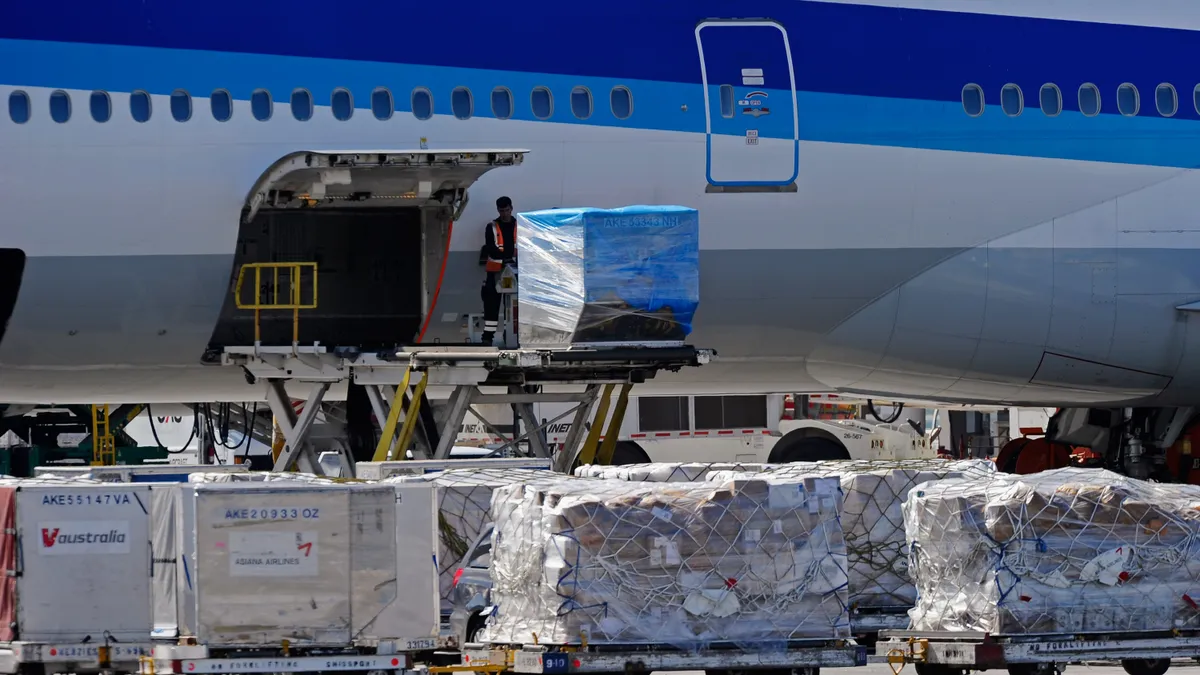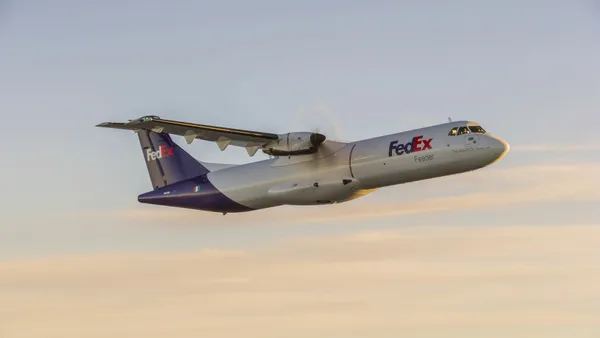While Lunar New Years is typically characterized by a spike in global air activity, the Year of the Rabbit is already off to a slower start as retailers, flush with excess inventory, fail to drive demand.
“What will be interesting … is whether there’s any type of rebound here as we get into the spring, and the different inventories folks will be looking for, compared to what was over supplied through the majority of last year,” Matt Castle, vice president of air services at C.H. Robinson, told Supply Chain Dive.
The holiday commences Jan. 22, with closures ranging from a few days to a couple of weeks.
Faced with early factory closures and reduced production, air cargo stakeholders have yet to see any noticeable upticks in demand. That stands in contrast to last year, when Transpacific cargo operators battled regulatory landscapes, capacity constraints and labor shortages to meet elevated Lunar New Year volumes.
“Four years prior to the pandemic, you typically saw your peak carryover all the way up until Chinese New Year — we had a couple of years where it seems like peak never went away,” Castle said.
This year, however, demand has remained relatively flat.
In December, volumes were down 8% YoY and 13% compared to 2019, representing the tenth consecutive month of falling demand, according to a Jan. 4 market analysis from Clive Data Services.
“The generalized reduction in demand has eased constraints on air cargo, which means they’re able to absorb most of the current influx of air volumes,” Spencer Shute, principal consultant at procurement and supply chain consultancy Proxima, told Supply Chain Dive.
Shute said Proxima is seeing freight booking cancellations for late January into mid-February, which indicates a coming drop in air and sea freight demand. The softening demand is a result of labor constraints among manufacturers, who are contending with reduced production schedules.
In the meantime, shippers should evaluate their forecasts and engage in supplier conversations to get up-to-date fulfillment and lead times to adjust their ordering processes as needed, Shute added.
“Taking these steps now will allow shippers to select optimal shipping routes and reduce impact costs if they start to act now,” he said.














